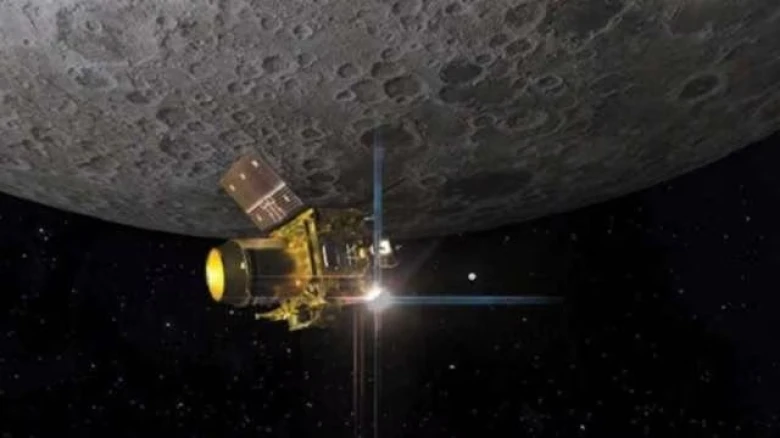National

Challenges of the Lunar South Pole
Landing on the lunar south pole is not for the faint-hearted. Several daunting challenges await Chandrayaan-3 as it attempts a descent into this rugged and enigmatic terrain.
Rugged Terrain: The lunar south pole is known for its rugged landscape, characterized by numerous craters, boulders, and uneven surfaces. Finding a suitable landing site in such an environment presents a considerable challenge, as there are fewer flat and stable areas available for a safe touchdown.
Perpetual Darkness: One of the most significant challenges is the region's lighting conditions. The lunar south pole experiences prolonged periods of darkness due to the angle of sunlight. This constant shadowing poses problems for solar-powered missions, as they are unable to harness sunlight for power generation. In such conditions, alternative power sources must be developed or utilized to ensure the mission's success.
Extreme Temperatures: The moon's south pole is subject to extreme temperature variations. During its long lunar night, temperatures can plummet to as low as -173°C (-279°F). Such frigid conditions can adversely affect equipment and electronics, requiring specialized design and insulation to ensure their functionality.
Communication Difficulties: The curvature of the moon often obstructs direct communication with Earth for missions targeting the lunar south pole. This can result in delays in receiving mission updates and transmitting commands, potentially affecting the real-time control and monitoring of the mission.
Challenging Landing Dynamics: The combination of rugged terrain and low gravity on the moon complicates the landing dynamics. Achieving a soft landing without damaging the spacecraft is intricate, as traditional landing methods used on Earth may not translate perfectly to lunar conditions.
Unpredictable Surface Properties: Surface properties, such as the presence of loose regolith (moon dust) and unexpected obstacles, can be unpredictable and vary widely across the lunar south pole. These variations can pose a risk to landing equipment and affect the overall success of the mission.
Water Ice and Volatiles: While the presence of water ice in shadowed craters at the lunar south pole is a potential resource for future lunar activities, it also introduces complexity. Water ice could alter the behavior of the lunar dust and affect the spacecraft's landing dynamics, as well as impact scientific instruments carried by the mission.
A historic milestone in sight
Despite these formidable challenges, ISRO's Chandrayaan-3 mission stands as a testament to India's growing prowess in space exploration. Success in this endeavor would not only position India among the elite group of lunar explorers but also pave the way for future missions aimed at harnessing the moon's resources for the benefit of humanity.
As the world eagerly watches the progress of Chandrayaan-3, India's aspirations to unlock the mysteries of the lunar south pole and harness its resources inch closer to reality. Regardless of the outcome, this mission represents a giant leap for India's space program and a significant contribution to humanity's ongoing quest for knowledge beyond our planet.
Leave A Comment